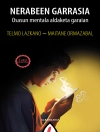This integrated collection of perspectives on the spaces of teaching and learning uses ‘learning space’ to place educational practice in context. It considers the complex relationships involved in the design, management and use of contemporary learning spaces. It sheds light on some of the problems of connecting the characteristics of spaces to the practices and outcomes of teaching and learning. The contributions show how research into learning spaces can inform broader educational practices and how the practices of teaching, learning and design can inform research. The selection of chapters demonstrates the value of gathering together multiple sources of evidence, viewed through different epistemological lenses in order to push the field forward in a timely fashion. The book provides both a broad review of current practices as well as a deep-dive into particular educational and epistemological challenges that the various approaches adopted entail. Contrasts and commonalities between the different approaches emphasise the importance of developing a broad, robust evidence-base for practice in context. This is the inaugural book in the series Understanding Teaching-Learning Practice.
Innehållsförteckning
1 Spaces of Teaching and Learning: An orientation.- 2 Assembling Spaces of Learning ’in’ Museums and Schools: A Practice-based Sociomaterial Perspective.- 3 Space, Place and University Society: Insights from Common-Pool Resource Theory.- 4 Design as Learning, Learning as Design.- 5 Towards a Social-semiotic Topography of University Learning Spaces: Tools to connect use, users and meanings.- 6 The Material Correspondence of Learning.- 7 Analysing the Learning Commons in the Digital Age.- 8 Measuring Engagement in the University Student Experience of Learning in Blended Environments.- 9 Collaborative Re-design: Working with school communities to understand and improve their learning environments.- 10 Old Wine in New Bottle? How technologies are being used in an elementary school in Singapore.- 11 The Missing Link: Aligning blended curricula with physical learning spaces in health inter-professional education.- 12 Learning Spaces Research: Framing actionable knowledge.
Om författaren
Robert Ellis is a professor and Dean (Learning and Teaching) across six faculties at Griffith University, Australia. Previously, he was the inaugural Director of e Learning at the University of Sydney and associate professor in the Institute for Teaching and Learning. He is a coordinating editor for Higher Education and co-series editor of Understanding Teaching and Learning Practice, both with Springer. He has been an Australian Research Council researcher since 2005, investigating quality in learning and teaching, the student experience of technology-enhanced learning and learning environments. His research program comprises over 80 journal, book and conference publications, aimed at making a meaningful social contribution to education and its participants through translational research outcomes. Peter Goodyear is a professor of Education at the University of Sydney, where he established and co-directed the Centre for Research on Computer-Supported Learning and Cognition (Co Co) and led the Sciences and Technologies of Learning research network, before founding and co-directing the University’s Centre for Research on Learning and Innovation (CRLI), a multi-faculty collaboration involving over 200 academic staff and Ph D students. Peter’s research interests include design for learning, networked learning, complex learning spaces, the nature of professional knowledge and professional education. In 2008, he was awarded a senior fellowship of the Australian Learning and Teaching Council, and in 2010 he became an Australian Research Council Laureate Fellow – the first and so far the only Laureate Fellow working in the field of Education. He has published 11 books and over 120 journal articles and book chapters, and his current program of research aims to strengthen the role of design knowledge in higher education.












